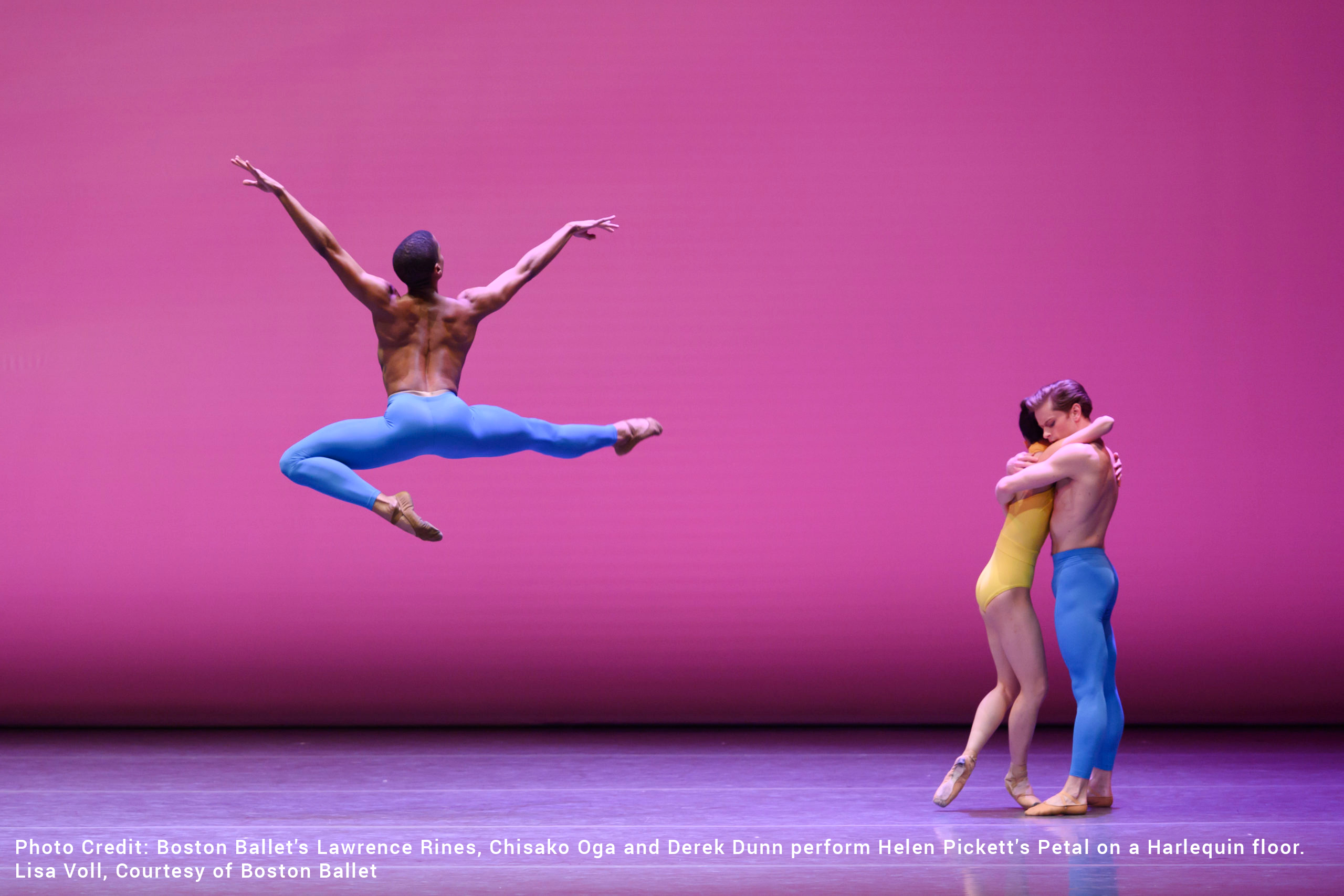Supportive Flooring Is—Literally—the Key to Help Your Dancers Bounce Back Post-Pandemic
After making the most out of dancing in living rooms, driveways and basements, dancers have a newfound appreciation of the little things, like mirrored walls, sturdy barres and, especially, supportive flooring. In fact, the quality of the studios dancers are so excited to return to will directly affect how quickly they restore both their technical and artistic confidence. But how do you know you’re giving your dancers the best possible space to reignite their training momentum? Dance Teacher spoke to Harlequin Floors, the global leader in advanced-technology dance flooring, and Kerri Regan, Boston Ballet’s resident physical therapist, to learn what makes a dancer-friendly floor—and why solid ground is crucial for your dancers to reach new heights.
The Floor Keeps The Score
As Boston Ballet physical therapist Kerri Raegan puts it, “Dancers are essentially professional jumping athletes.” In fact, she notes that during any given day, Boston Ballet company members average upwards of 200 jumps—and that’s only in morning technique class. Performed without the proper floor, those takeoffs and landings are an easy culprit for stress fractures, strained tendons and other injuries. “If dancers have no give in their floor, they have to increase the bend angle of their hip, knee and ankle joints in their takeoff to create enough energy to get off the hard surface,” explains Raegan. “But, with a properly sprung floor, dancers don’t need as much of a preparation, which decreases the eccentric load on their joints.”
On the way down, “dancers need a proper floor to absorb and disperse the force that the joints absorb upon landing,” says Raegan. The bottom line: Concrete or un-sprung wooden floors can jeopardize your dancers’ success—and safety—more than you think.
Leave It To The Pros
“It’s remarkable how many dancers we talk to, of all ages and ability levels, that have recognized how they dance better and longer, and even jump higher, on a Harlequin floor,” says Harlequin marketing director Chrissy Ott. Thanks to a dedicated team of artistic, technical and medical experts, Harlequin’s sprung floors, including Harlequin WoodSpring® and Harlequin Liberty LatchLoc™, are all specially designed, including the type of wood used, for shock absorption.
This alone does dancers a world of good, but they also need a floor that lets them slide and glide (aka, realize their ballet teachers’ dreams of “using the floor” in tendus and grand battements.) For this, Harlequin is again your flooring fairy-godmother. They offer a variety of vinyl marley coverings, including Harlequin Cascade, which has a silky smooth, embossed surface for extra grip, and the Harlequin Studio, which has a cushioned back for added protection, especially during pointe work.
Raegan has seen the Harlequin difference first-hand at Boston Ballet, where all 14 studios use WoodSpring floors with Cascade. “During a busy season of Nutcracker, I fully believe that our Harlequin flooring plays a great role in helping our dancers stay safe,” says Raegan. And don’t fret if you’re not a nationally-recognized ballet company: Harlequin’s product experts are committed to solving every kind of dance-flooring dilemma, big or small. Their newest sprung floor, Harlequin Flexity™, a self-install panel system, is a cost-effective option for all dance studios seeking to provide a top-notch dance floor for their students.
Confidence Is Key
The sky’s the limit when dancers have a safe place to land, and after a year-plus riddled with pandemic uncertainty, rebuilding dancers’ confidence is key. For Harlequin, protecting and empowering dancers has always been a priority, which is why they’re supporters of the Harkness Center for Dance Injuries as well as a major patron of the International Association for Dance Medicine & Science. “Performance and safety are at the core of everything we do,” Ott explains. “We strive to deliver high-quality, industry-standard floors that reduce the risk of injury to performers and allow them to dance with confidence.”
Read the full article here: Dance Teacher Magazine | Supportive Flooring Is-Literally-the Key to Help Your Dancers Bounce Back Post-Pandemic

